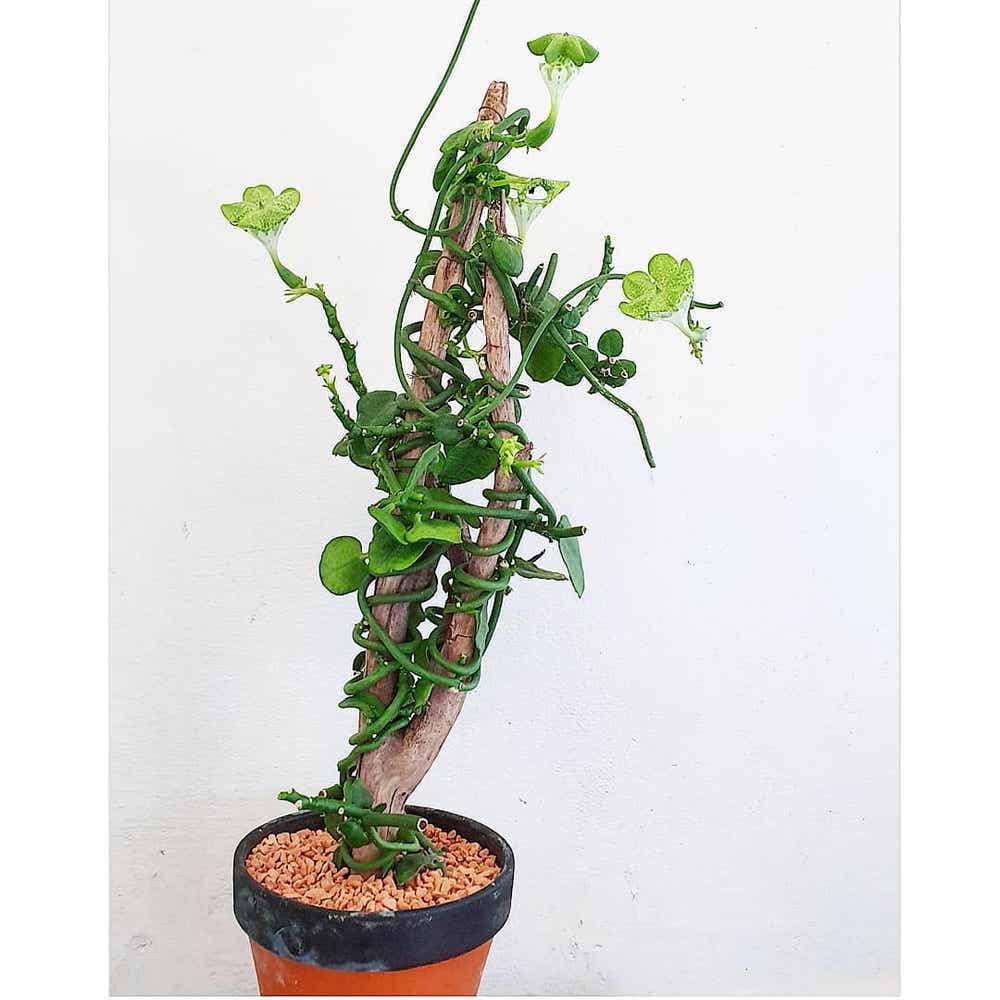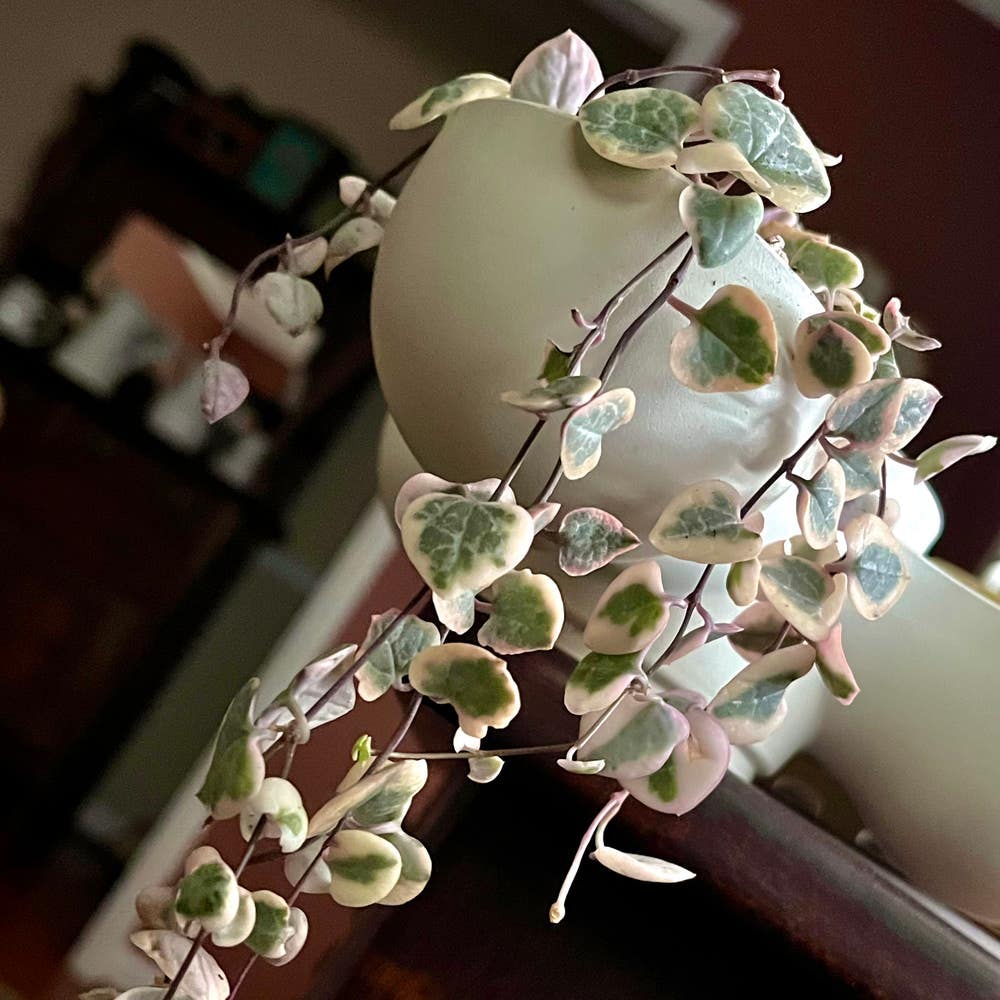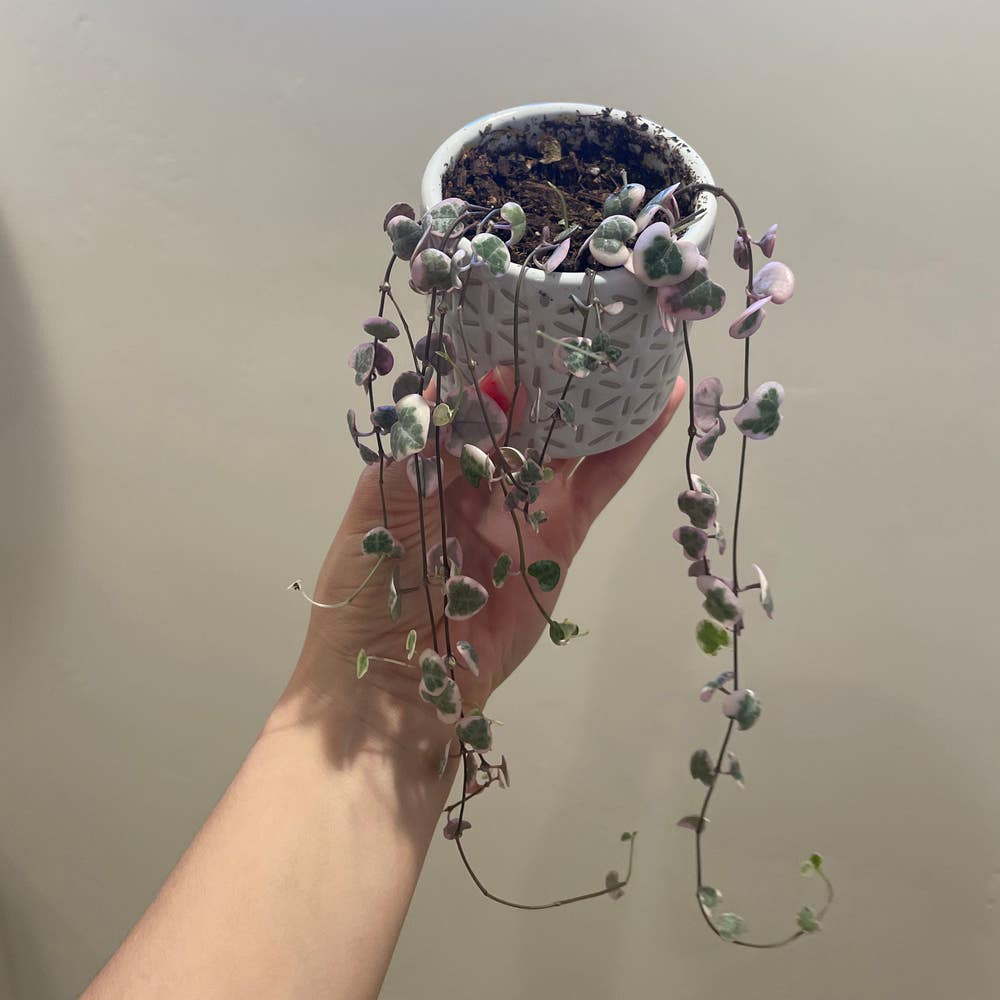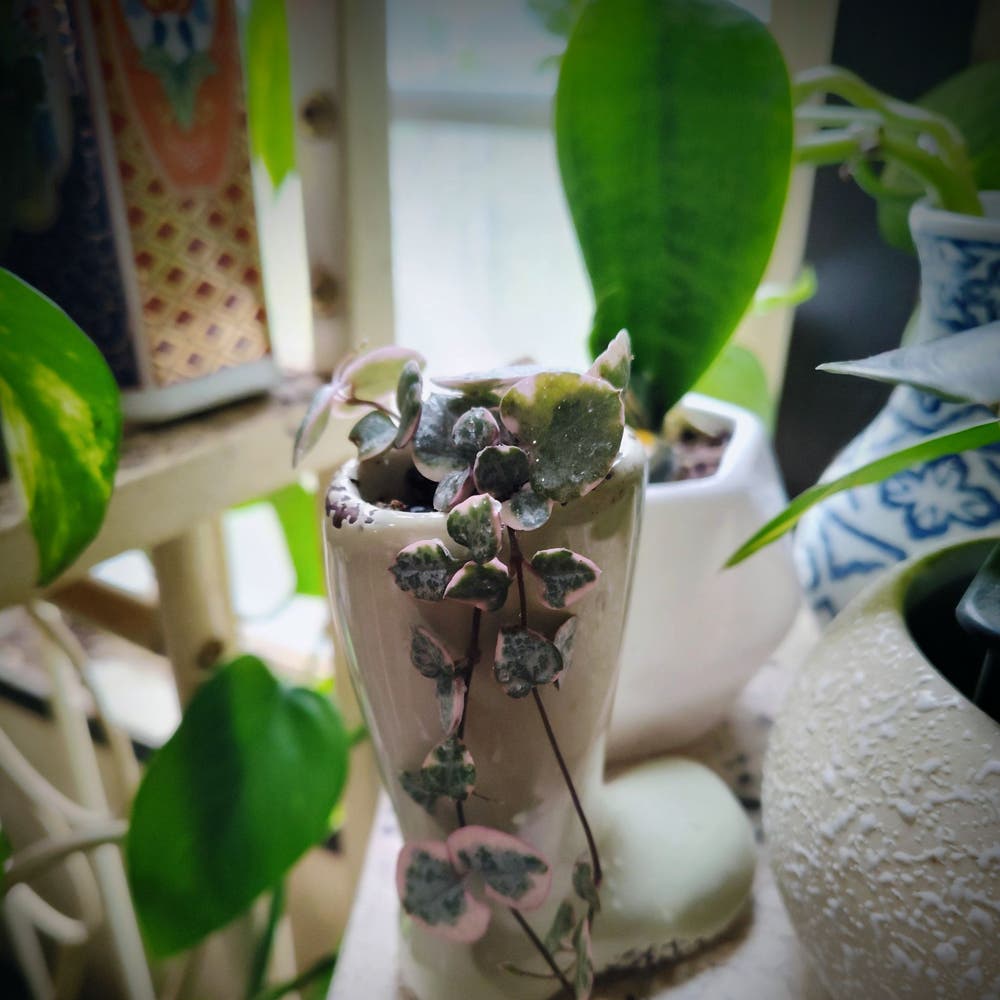




































Ceropegia Sandersonii
Also known as
Parachute Plant, Parachute Plant, parachute flower, fountain flower, Sanderson's Ceropegia and Umbrella Plant
Taxonomy

Ceropegia sandersonii
Ceropegia
Apocynaceae
Gentianales

How to care for Ceropegia Sandersonii
How often to water your Ceropegia Sandersonii

every 12
Ceropegia Sandersonii needs 0.5 cups of water every 12 when it doesn’t get direct sunlight and is potted in a 5" pot.
Use our water calculator to personalize watering recommendations to your environment or download Greg for more advanced recommendations for all of your plants.

Water 0.5 cups every
12
Finding light for Parachute Plant in your home

a window
Ceropegia Sandersonii may have difficulty thriving, and will drop leaves 🍃, without ample sunlight.
Place it less than 3 feet from a south-facing window to maximize the potential for growth.
Select your region to see how the current weather in your area affects the placement of Ceropegia Sandersonii in your home 🏡.
How to fertilize Ceropegia Sandersonii

Most potting soils come with ample nutrients which plants use to produce new growth.
By the time your plant has depleted the nutrients in its soil it’s likely grown enough to need a larger pot anyway.
To replenish this plant's nutrients, repot your Ceropegia Sandersonii after it doubles in size or once a year—whichever comes first.
-
what happened to my plant
-
My plant looks like it's dying it has brown leaves what should I do to make it stop #StringOfHearts
-
My plant is purple/red #ParachutePlant
-
Got my first ceropegia Sandersonii today! It’s a single vine about 6’ long. Is it better to trellis them or let them hang? #ParachutePlant
-
Happy Monday! #SucculentSquad Echeveria ‘Aphrodite’- looks so healthy right now, also has a baby growing if you look closely. 🪴 Mexican Firecracker- I got this in the mail Saturday from @Lifeis2short (: thank you! I hope I can give it a happier life! I love the yellow pot too 💛 Stringy Stonecrop- this one is outside, and since spring is pretty much here, it’s regrown and looking nice and tidy.. for now 😂🌿 VSOH- I got this in November thinking about replanting soon… nervous about that.. iykyk. 😳 but is has new growth! Gopher Plant- LOOK AT THOSE BLOOMS! This one is hardy in my zone so it’s also outside. The blooms are so alien like, and each one is different. I took tons of photos, but I can only post five. 😫 #SucculentLove #GrowingSuccs #BloomingSuccs #Echeveria #Sedum #HappyPlants #NewGrowth #StringOfHearts #PlantAddict #PlantAddict #PlantsMakePeopleHappy #Succulents #Succulent
-
Is it salvageable? #StringOfHearts Hi! I recently got a new string of hearts plant with 6-8 tubers. I placed all of them in a pot together along with a few other small succulents. When potting, I used a small amount of rooting hormone but this tuber didn't take to the soil so I moved it to this separate small container after about a week. The rest of the plant is all green with a hint of red while this part is pretty much completely red and wrinkly. Is this normal and is there anything I can do to help? Thanks!
-
repotted my Variegated String Of Hearts last night! 💕🌿 I’m so happy I finally repotted it was a little root bound, and I wanted to add a spiller to my new tiered pot I got last week. I’m not quite done but I’m getting there! I made some special soil mix just for the hearts, because they can be a little fussy. I used cactus soil, sand, orchid bark, perlite, & bonsai jack gritty mix. It’ll be acidic which most succs like, and it will be well draining as well. I can’t wait to see how it responds to the repot. I will update you guys as it grows. 🌱💕 #vsoh #StringOfHearts #StringLoversTogether #HappyPlants #NewGrowth #GrowingSuccs #SucculentLove #SucculentSquad #Succulents #Succulent #SuccerForSucculents #PlantAddict #PlantsMakePeopleHappy #FreshLeafFriday #FreshFeaturedFriday
-
Plant nibbler caught! Poor string of hearts getting pruned by a curious orange cat. 🐈 😛
-
How to help my plant thrive My VSOH used to be so full and happy. It is surviving, but definitely not thriving. I have cut and propagated many times but it just doesn’t look happy, and is dropping leaves like crazy. Does anyone have tips on how to help this plant thrive again??? #HappyPlants #PlantAddict #PlantsMakePeopleHappy #NewGrowth #StringOfHearts #PlantTherapy #NewPlantMom #BeforeAndAfter #PlantLove #GregGang #GreggersSupportingGreggers #Greggers
-
I could not pass up this cute little string of hearts. 💜 #stringofhearts #succulentlove #greggang #happyplants #plantsmakepeoplehappy #plantaddict
Care Summary for Ceropegia Sandersonii

Ceropegia Sandersonii
 Greg recommends:
Greg recommends:
 Water
Water
0.5 cups every 12 days
 Placement
Placement
< 3ft from a window
 Nutrients
Nutrients
Repot after 2x growth
Based on the 4” pot your plant is in, and that it doesn’t get direct sunlight.

 Trending in your area
Trending in your area
 Similar to Ceropegia Sandersonii
Similar to Ceropegia Sandersonii
✨ Discover rare plants

Christmas Candle

Peperomia 'Harmony's …

Scotch Moss

Sedeveria 'Blue Elf'

Hoya crassipetiolata

Echeveria Esther

Tuber Fleeceflower

Aglaonema Spitfire

Rhipsalis clavata

Blushing Aeonium

White Apple Moth Orch…

Orange Lipstick Plant

Raphionacme flanaganii

Lavandula Pedunculata

Rainbow Echeveria

Pine Cone Plant

Hoya 'Millie'





































